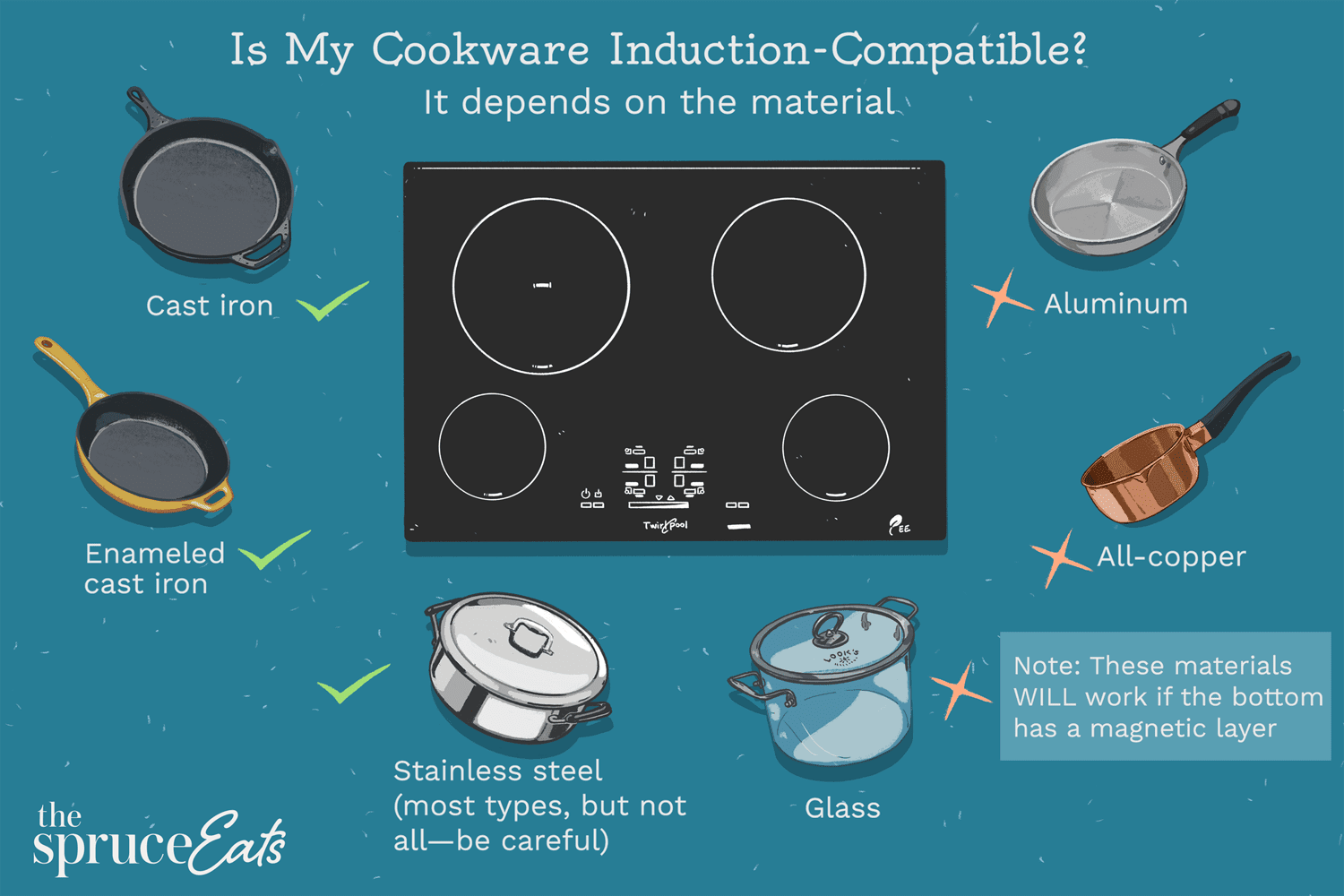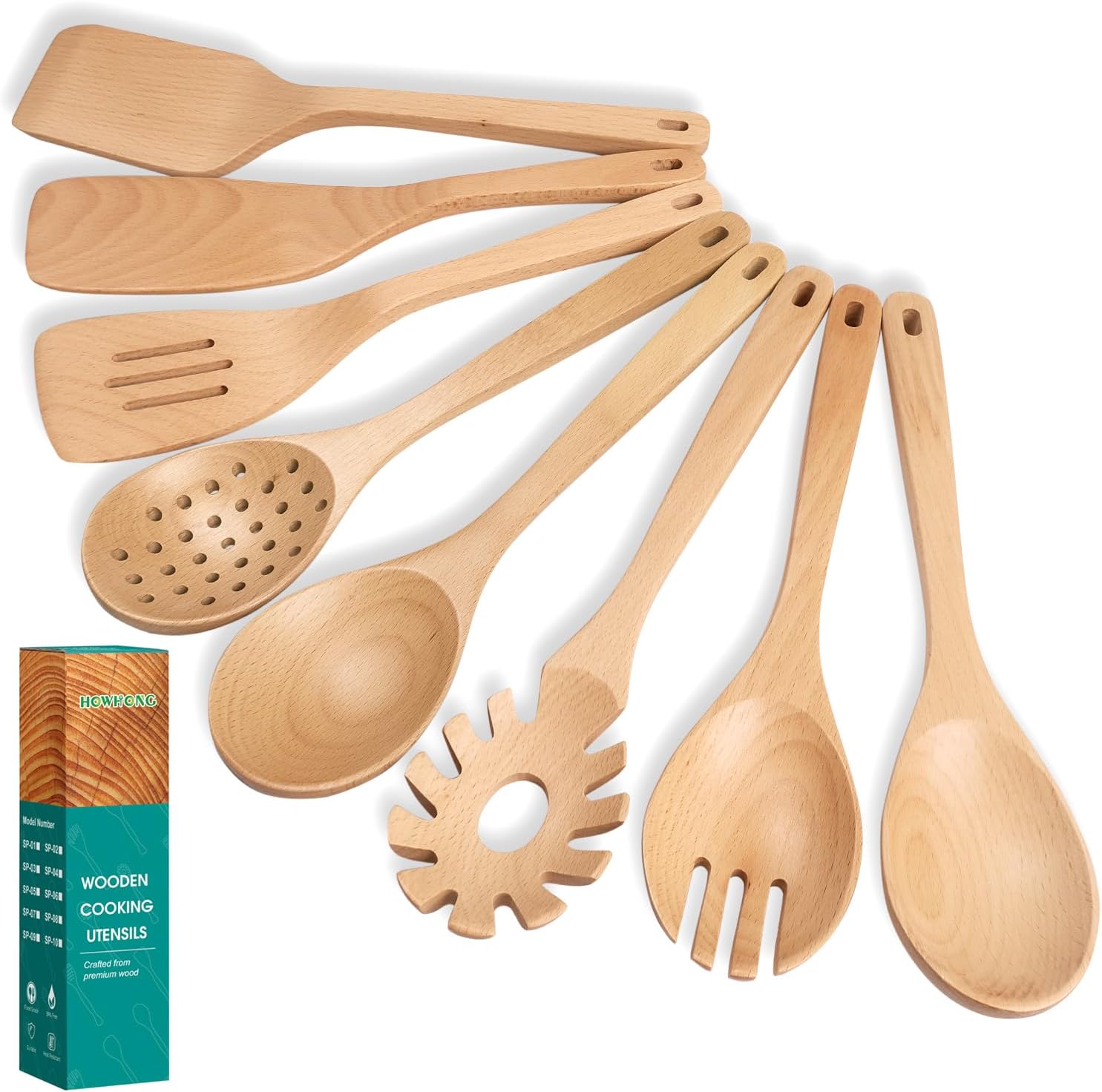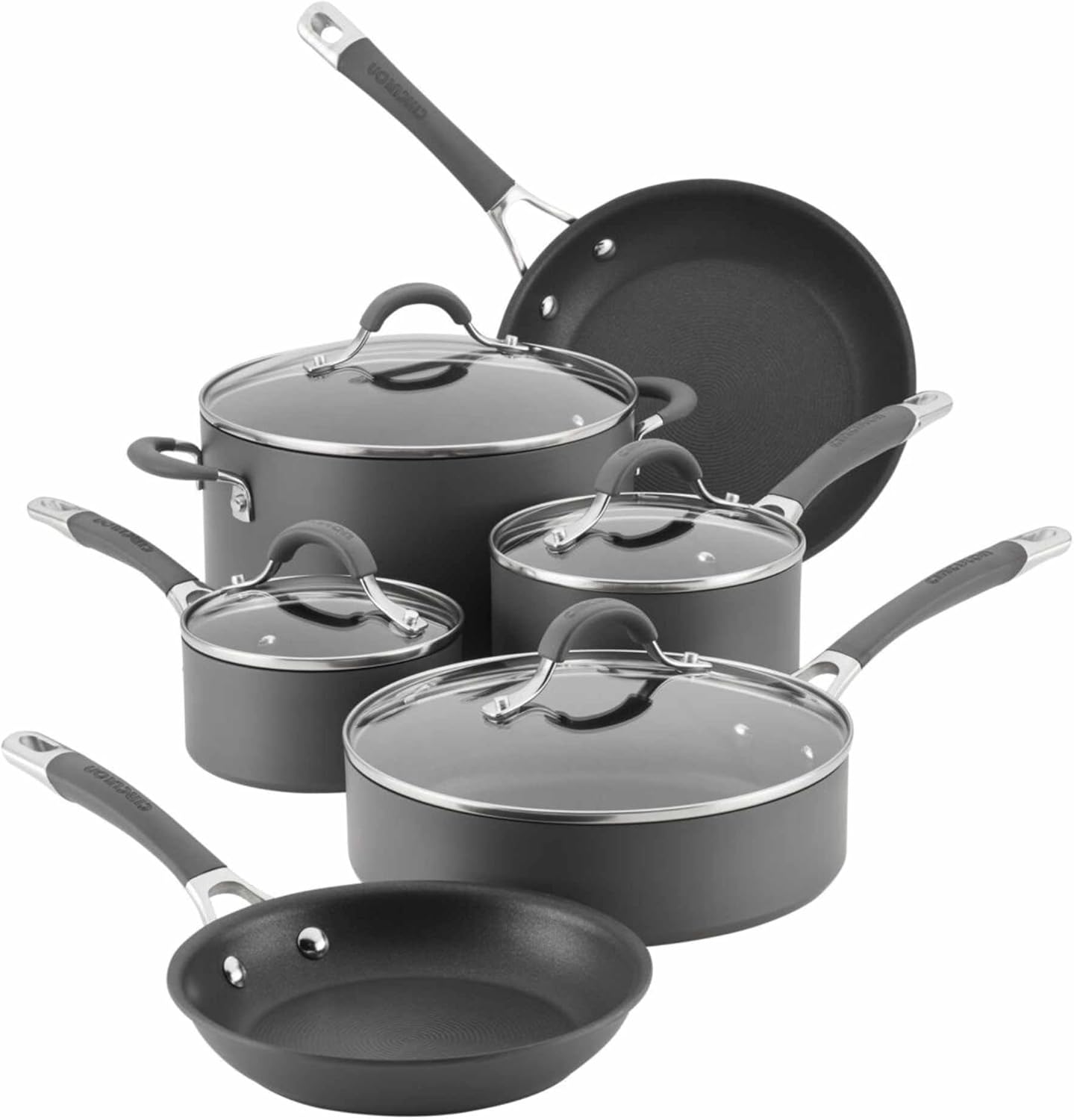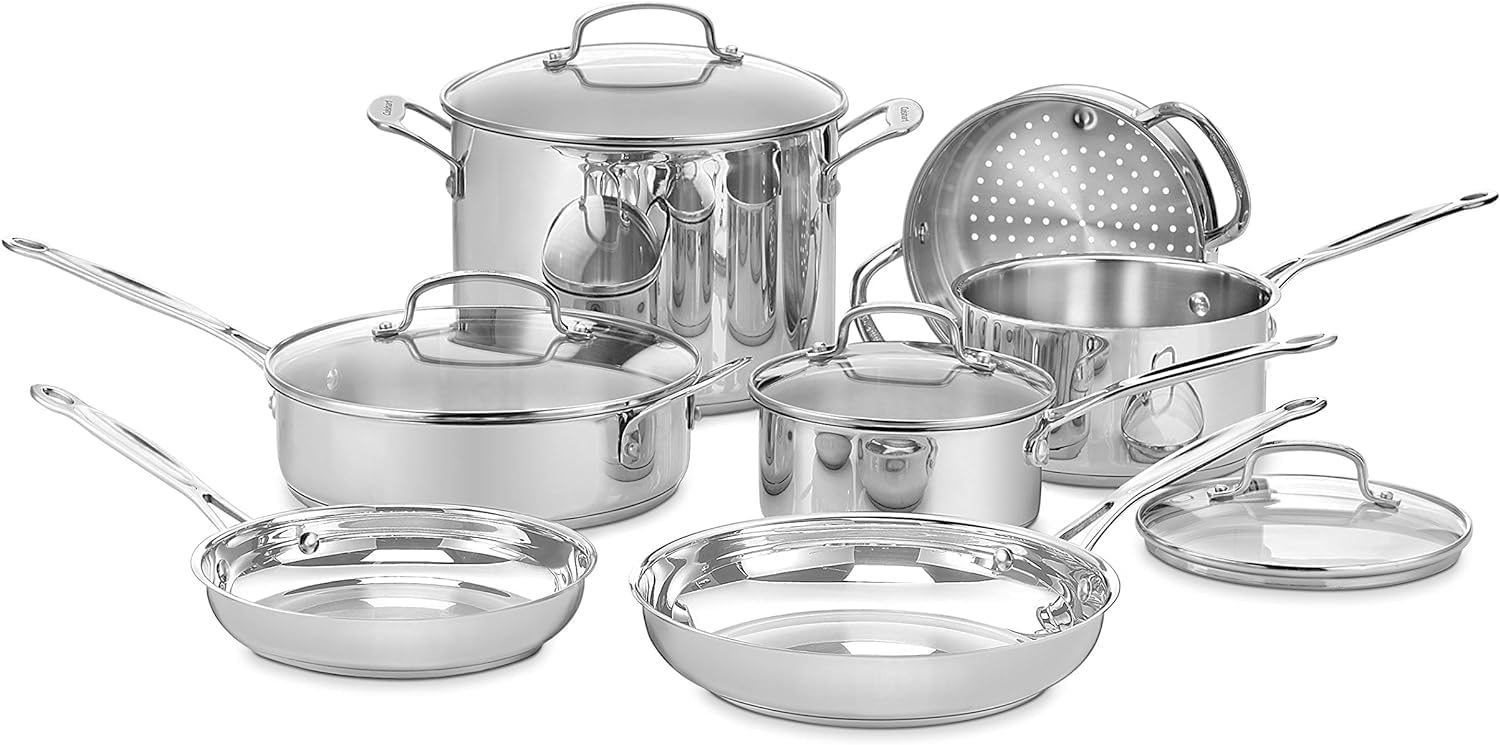To determine if a pan is induction compatible, check for a magnet’s attraction to the pan’s base or look for an induction symbol. A pan must have a magnetic base to work with an induction cooktop.
How Do You Know If a Pan is Induction:Selecting the right cookware is essential for efficient cooking on an induction stove. Induction cooking is favored for its quick heating and energy efficiency, but it requires specific types of pans. The key feature of induction-compatible pans is a base containing ferrous metal, which responds to the magnetic field generated by the cooktop.
Home cooks can easily test their pans with a simple magnet—if it sticks firmly, the pan is suitable for induction cooking. Many manufacturers also mark their cookware with an induction symbol, typically a series of loops or a coil design, to indicate compatibility. Understanding these indicators can save time and ensure a seamless cooking experience. By selecting the appropriate cookware, you can harness the full potential of your induction hob and elevate your culinary creations.
The Basics Of Induction Cooking
The world of cooking is vast and varied. One exciting part is induction cooking. It uses electromagnetic fields to heat pans. This method is fast and efficient. But not all pans work with induction cooktops. Let’s explore the basics of induction cooking.
Defining Induction Cooktops
Induction cooktops are kitchen marvels. They look sleek and modern. Unlike traditional stoves, they don’t use flames or electric coils. Instead, they use electromagnetism to cook food. This means they need special pans to work.
The Science Behind Induction
How does this all work? The key is magnetic fields. When you turn on an induction cooktop, it creates a magnetic field. If you place a compatible pan on it, the field induces small electric currents in the pan. These currents make the pan hot. This heat then cooks the food. But remember, not all pans can do this.
- Magnetic materials are needed for a pan to work on an induction cooktop.
- Materials like cast iron and some stainless steels work well.
- Non-magnetic materials, like glass, aluminum, and copper, won’t work unless they have a magnetic layer added.
To check if a pan is induction compatible, try a magnet test. If a magnet sticks firmly to the bottom of the pan, it will work with an induction cooktop.
| Material | Induction Compatible |
|---|---|
| Cast Iron | Yes |
| Stainless Steel (with magnetic base) | Yes |
| Aluminum (without magnetic layer) | No |
| Copper (without magnetic layer) | No |
| Glass | No |
Remember, the key to induction cooking is magnetic compatibility. Always check your pans before using them on an induction cooktop.
:max_bytes(150000):strip_icc()/Web_1500-SES-tfal-Donna-Currie-bc3542e9ade843a99b1ef6fbebec4801.jpg)
Credit: www.seriouseats.com
Identifying Induction Compatible Pans
Wondering if your pan can work on an induction stove? You’re not alone. Many people find themselves puzzled when trying to identify if their cookware is compatible with induction cooking. It’s important to know which pans will work before you turn on that induction cooktop. Let’s dive into the key signs that your cookware is ready for this modern cooking method.
Key Materials In Induction Cookware
Induction cooking requires pans with a magnetic base. The most common materials include:
- Stainless steel: Look for “18/10” or “304” grade.
- Cast iron: Heavy and durable, a sure bet for induction.
- Enamel cast iron: Cast iron coated with enamel works too.
- Magnetic stainless steel: Not all stainless steel is magnetic.
Materials like aluminum, copper, or glass won’t work unless they have a magnetic layer.
Physical Features To Look For
Check these features to confirm induction compatibility:
- Flat bottom: Ensures proper contact with the cooktop.
- Magnet test: If a magnet sticks to the bottom, it’s compatible.
- Manufacturers’ symbol: Look for an induction symbol on the packaging or bottom of the pan.
Remember, the right pan makes all the difference in induction cooking.
The Magnet Test: A Simple Trick
Discovering if your pan works on an induction cooktop is easy with the magnet test. This quick trick reveals compatibility in seconds. Let’s explore how it works.
Performing The Magnet Test
Follow these steps to perform the magnet test:
- Grab a magnet – A fridge magnet will do.
- Place it on the pan’s base – Ensure it’s flat against the bottom.
- If the magnet sticks firmly, your pan is induction-ready.
- No stick means the pan won’t work on induction cooktops.
Why Magnets Matter
Induction cooktops need magnetic pans to heat up. The stove generates a magnetic field. This field makes the pan hot and cooks the food. If a pan lacks this magnetic quality, it can’t interact with the cooktop.
Pans made of iron or steel are often suitable. Aluminum or copper pans typically need a special layer to work on induction. The magnet test quickly tells you if your pan has the right metal.
Labels And Symbols Explained
Understanding which pans work on an induction cooktop can be tricky. Look for special labels and symbols. They tell if a pan is induction-ready. Let’s decode these important markers.
Deciphering Cookware Symbols
Cookware comes with symbols on the bottom. These symbols show compatibility with different heat sources. For induction, seek out a looped square or four loops. This means ‘induction-ready’. Other symbols like gas flames or solid lines suggest different heat sources. Always check for the induction symbol before buying.
Manufacturer Labels And What They Mean
Manufacturers label their cookware clearly. They use terms such as ‘induction compatible’ or icons to indicate suitability. A magnet sticking to the base also means a pan works with induction. Labels are your go-to guide for ensuring cookware matches your induction cooktop.
| Symbol | Meaning |
|---|---|
| ⚓ | Gas compatible |
| ⚡ | Electric compatible |
| 🌀 | Induction compatible |
| 🔥 | Oven safe |
| ❄️ | Freezer safe |
- Looped square: Indicates induction compatibility
- Gas flame: Suitable for gas stoves
- Solid lines: Electric stoves can use the pan
Remember, induction cooktops need magnetic cookware. Stainless steel and cast iron usually work. Glass, aluminum, and copper typically do not unless they have a magnetic layer added.
Weight And Thickness Factors
Understanding a pan’s induction compatibility involves assessing its weight and thickness. Heavy and thick bases often indicate a pan will work well on an induction cooktop, ensuring even heat distribution.
When selecting pans for induction cooking, weight and thickness play crucial roles. Not all cookware works with induction stovetops. Hence, understanding these factors ensures efficient cooking and compatibility.
The Role Of Weight In Induction Cooking
Induction stoves require pans with a certain heft. Heavier pans often indicate the presence of induction-friendly materials. A simple test involves lifting the pan. Induction-compatible pans tend to be weightier due to the metals used. These metals react to the induction stove’s magnetic field. Lightweight pans may not contain enough ferrous material. Thus, they might not work on an induction cooktop. Look for pans that have a solid feel. They should not be too heavy to handle comfortably.
Optimal Pan Thickness
Thickness impacts a pan’s performance on induction cooktops. Thicker bases provide better heat distribution. They prevent hot spots and ensure even cooking. Ideal thickness ranges from 2mm to 6mm. This thickness balances heat conduction and durability. Perform a magnet test to check for compatibility. A magnet should stick firmly to the base of the pan. This indicates a good thickness with sufficient ferrous content.
Remember, not all thick pans work on induction. The pan must contain magnetic material throughout its base. Check for a label or the induction symbol. This symbol looks like a coil or loop. It confirms the pan’s suitability for induction cooking.
Ultimately, the right weight and thickness ensure optimal cooking results on induction cooktops. Choose wisely for the best culinary experience.
Cookware Brands And Induction Compatibility
Cookware Brands and Induction Compatibility is a hot topic. Many want to know which pans work with induction cooktops. Not all do. It’s crucial to pick the right brand. Let’s dive into which brands offer induction-compatible cookware.
Trusted Brands In Induction Cookware
Some brands stand out for their quality and compatibility with induction cooktops. These brands ensure your cooking experience is top-notch.
- All-Clad: Known for high-quality, durable cookware.
- Le Creuset: Offers colorful, enamel-coated cast iron pans.
- T-fal: Provides affordable, non-stick options.
- Calphalon: Features a wide range of induction-ready cookware.
Budget-friendly Induction Options
Worried about the cost? Some brands offer great induction cookware without breaking the bank.
| Brand | Features | Price Range |
|---|---|---|
| Lodge | Cast iron skillets, griddles | $20-$60 |
| IKEA | Stainless steel and non-stick options | $10-$50 |
| AmazonBasics | Non-stick and stainless steel sets | $40-$100 |
Choosing the right brand can make all the difference. Whether you invest in a premium brand or opt for a budget-friendly choice, ensure it’s induction compatible. Happy cooking!
Using Converters For Non-induction Cookware
Many kitchens now feature induction cooktops. Yet, not all pans work on them. What happens if your favorite pan doesn’t work? Don’t worry! Converters come to the rescue. Let’s explore how you can use converters for non-induction cookware.
How Induction Converters Work
Induction converters are simple but clever. They act like a bridge. On one side, they have a surface that induction cooktops can heat. On the other side, they provide a base for your non-induction pan. The converter heats up from the cooktop. Then, it passes the heat to your pan. This way, any pan becomes suitable for an induction cooktop.
Pros And Cons Of Using Converters
Converters sound great, right? Let’s see their pros and cons.
| Pros | Cons |
|---|---|
|
|

Credit: www.youtube.com
Maintaining Induction Cookware
Induction cooktops offer efficient and precise cooking.
They require specific pans that work with magnetic fields.
Proper care ensures these pans last longer and perform better.
Cleaning And Care Tips
Induction cookware needs regular cleaning for optimal performance.
Use gentle detergents and avoid harsh scrubbers.
- Wash pans soon after cooking.
- Dry them immediately to prevent water spots.
- For stuck-on food, soak pans before cleaning.
These tips keep cookware looking new and functional.
Longevity Of Induction-compatible Pans
Quality pans can last for years with proper care.
Avoid high heat to prevent warping.
Use wooden or silicone utensils to prevent scratches.
| Material | Use | Don’t Use |
|---|---|---|
| Stainless Steel | Low to medium heat | Metal utensils |
| Non-stick | Wooden utensils | Dishwasher |
Store pans carefully to avoid scratches and dents.
Stack with protectors or hang individually.
Common Myths And Misconceptions
Common myths and misconceptions about induction cookware abound. It’s crucial to separate fact from fiction to make informed choices about your kitchen tools. Let’s debunk some common falsehoods and verify what makes a pan truly induction-ready.
Busting Induction Cooking Myths
- Myth: Only expensive pans work on induction cooktops.
- Myth: Induction cooking is not safe.
- Myth: You can’t use cast iron on induction.
Truth: Price doesn’t determine induction compatibility. Magnetic base does.
Truth: Induction cooktops are safe. They don’t heat without proper cookware.
Truth: Cast iron pans often work well with induction cooktops.
Fact-checking Induction Compatibility Claims
| Pan Material | Induction Compatible |
|---|---|
| Stainless Steel | Check with a magnet |
| Aluminum | Needs a magnetic layer |
| Copper | Requires a magnetic base |
| Non-stick | Look for induction-ready symbol |
To test a pan’s compatibility, use a simple magnet. If it sticks firmly to the bottom, your pan should work on an induction cooktop. Always look for the induction symbol or check the manufacturer’s specifications for confirmation.
Expert Tips For Induction Cooking
Induction cooking transforms kitchens with speed and precision. Understanding cookware compatibility is key. Let’s explore how to select the right pans for an induction stovetop.
Chef’s Advice On Choosing Pans
Material matters. Chefs recommend pans made of magnetic materials. Stainless steel and cast iron are top choices. Non-magnetic pans like pure aluminum won’t work.
Check with a magnet. A simple test involves a fridge magnet. If it sticks to the pan’s base, it’s good for induction.
Look for the symbol. Many pans have an induction-compatible symbol on the bottom. This makes shopping easy.
Maximizing Efficiency With Compatible Cookware
Using the right pans maximizes energy efficiency. This leads to quicker heating times and lower energy bills.
- Flat-bottomed pans ensure better contact with the cooktop. This improves heat transfer.
- Proper sizing is also crucial. Match the pan’s base to the induction zone for best results.
- Quality counts. Invest in well-constructed pans. They distribute heat evenly and last longer.
Remember, not all “stainless steel” pans work. Some have non-magnetic grades. Always test with a magnet before buying.
Credit: www.quora.com
Frequently Asked Questions
How To Tell If Pan Will Work On Induction?
To check if a pan works on an induction stove, use a magnet. If it sticks firmly to the bottom, the pan is induction-compatible.
What Is The Symbol For Induction Pans?
The symbol for induction pans is a coil or loop, often resembling a spring or series of loops.
What Happens If You Use A Normal Pan On An Induction Hob?
Using a normal pan on an induction hob won’t work because the pan must be magnetic to interact with the hob’s electromagnetic field. Non-induction pans simply won’t heat up.
What Pans Cannot Be Used On Induction?
Pans made of copper, glass, aluminum, and ceramic typically don’t work on induction cooktops unless they have a magnetic layer.
Conclusion
Determining induction compatibility is straightforward with the right tips. Check for a magnet’s cling, look for the induction symbol, or perform a water test. Remember, the right pan ensures efficient cooking and energy savings. Embrace these methods and make your induction cooking experience seamless and enjoyable.





Leave a Reply